The 30 Best Elementary Schools in Texas: Rankings and Academic Performance

Texas offers exceptional educational opportunities at the elementary level, with numerous schools consistently ranking among the nation’s best.
These institutions span major metropolitan areas including Dallas, Houston, Austin, San Antonio, and Plano, representing both large urban districts and smaller suburban communities.
Parents seeking top-tier elementary education for their children can find outstanding options across Texas, from highly-rated schools in affluent suburbs like Southlake and The Woodlands to exceptional programs within major city districts.
The state’s elementary schools are evaluated through multiple criteria including academic performance, student outcomes, and various quality indicators that help families make informed decisions about their children’s education.
Here are the 30 best elementary schools in Texas:
1. Carroll Elementary School, Southlake
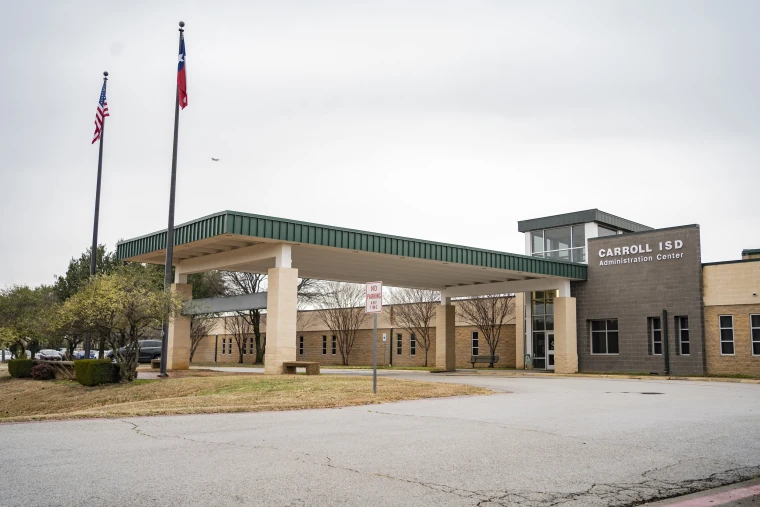
Carroll Elementary School stands as one of Texas’s premier public elementary schools. The school serves 630 students in grades prekindergarten through fourth grade in Southlake.
The school consistently ranks within the top 1% of all public schools in Texas. Carroll Elementary has earned rankings between 2nd and 36th place among over 4,600 elementary schools statewide in recent years.
U.S. News & World Report ranked Carroll Elementary as the 4th best elementary school in Texas among 4,446 schools. The school maintains a 5-star rating from SchoolDigger, reflecting exceptional academic performance.
Carroll Elementary operates within the Carroll Independent School District. The school offers a Gifted & Talented program for advanced learners.
The student-to-teacher ratio stands at 13.8 students per teacher. This ratio supports individualized attention and quality instruction for students throughout their elementary education.
2. Creekside Forest Elementary School, The Woodlands
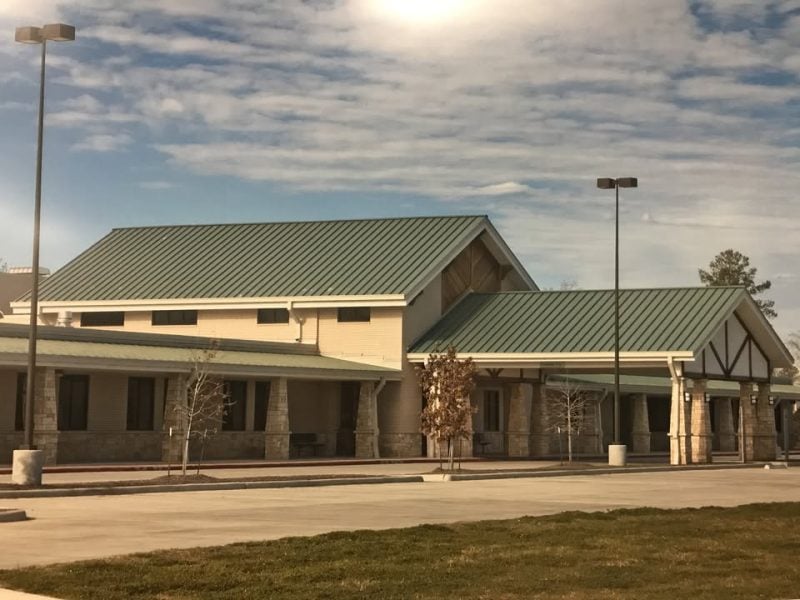
Creekside Forest Elementary School serves 692 students in grades K-5 in The Woodlands, Texas. The school operates within the Tomball Independent School District, which ranks 32nd out of 961 districts statewide.
The school earned recognition as the 10th best elementary school in Texas according to U.S. News & World Report’s rankings. It consistently ranks among the top 20 elementary schools in the state.
Creekside Forest offers a Gifted & Talented program for qualifying students. The school is located at 5949 Creekside Forest Drive in The Woodlands.
The Woodlands area contains 16 elementary schools split between two districts. Creekside Forest stands out among these options for its academic performance and programming.
The school operates under Tomball ISD’s mission to provide innovative and rigorous educational experiences while partnering with the community.
3. Lawler Middle School, Plano (Grade 6)
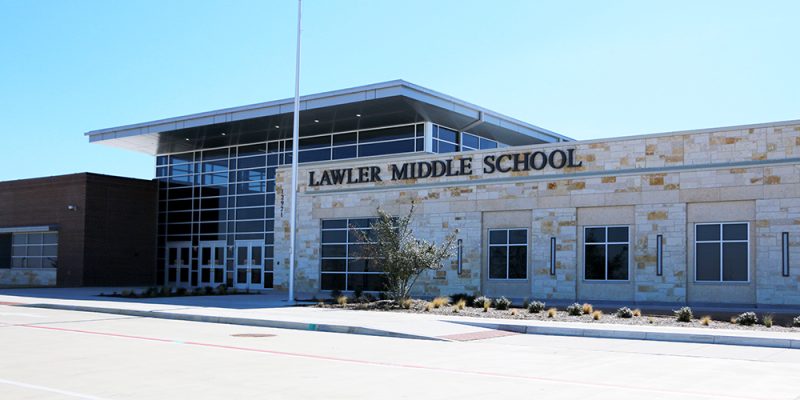
Lawler Middle School stands as one of Texas’s premier educational institutions. The school ranks within the top 1% of all public schools statewide.
Located in Frisco, Texas, the school serves 921 students across grades 6-8. The institution maintains a student-to-teacher ratio of 14.9 students per educator.
This middle school operates within the Frisco Independent School District. The district has established a strong reputation for academic excellence throughout the region.
Lawler Middle School consistently demonstrates high performance standards. Students benefit from quality instruction and comprehensive educational programs.
The school’s top-tier ranking reflects its commitment to student achievement. Families in the area recognize it as a standout choice for middle school education.
4. University Park Elementary School, Dallas
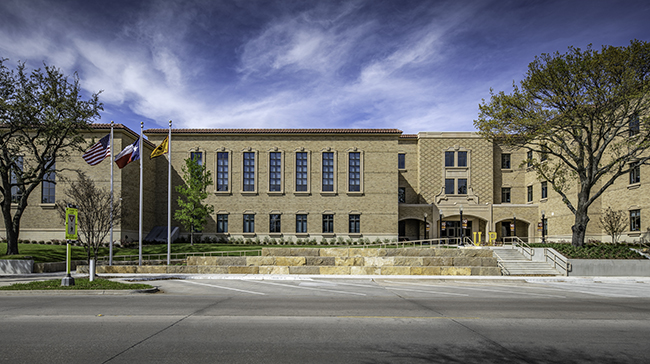
University Park Elementary School operates within the Highland Park Independent School District in Dallas. The school serves students in a well-established suburban community known for academic excellence.
The district maintains high educational standards and offers strong academic programs. Students benefit from small class sizes and individualized attention from qualified teachers.
University Park Elementary provides a comprehensive curriculum that prepares students for continued success in secondary education. The school emphasizes both academic achievement and character development.
The campus features modern facilities and resources that support student learning. Technology integration enhances classroom instruction across all grade levels.
Parents value the school’s commitment to educational excellence and community involvement. The Highland Park area attracts families seeking quality public education options.
The school consistently demonstrates strong performance metrics. University Park Elementary maintains its reputation as one of the premier elementary schools in the Dallas metropolitan area.
5. Baldwin Elementary School, Austin
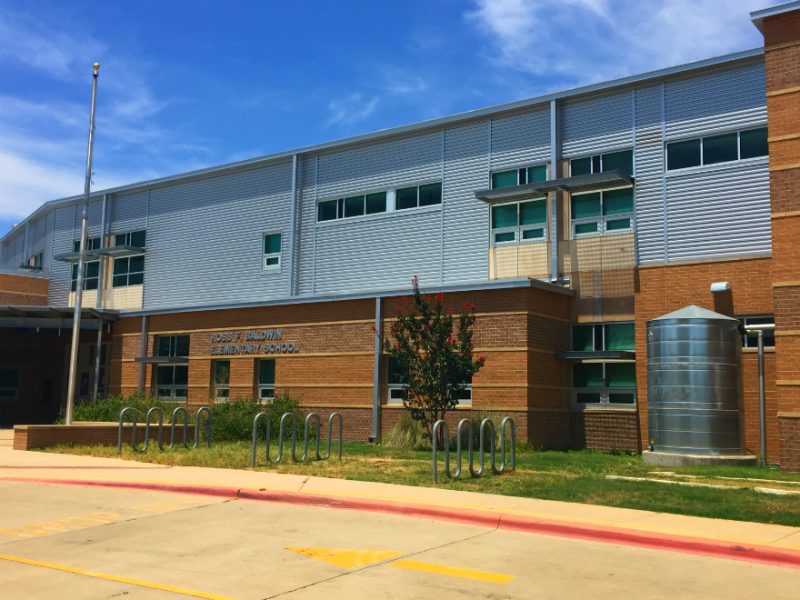
Baldwin Elementary School serves students in the Austin Independent School District. The school provides education for prekindergarten through fifth grade students.
The campus offers various academic programs designed to support student learning and development. Teachers work to create engaging classroom environments that promote educational growth.
Baldwin Elementary participates in district-wide initiatives and follows state curriculum standards. The school maintains facilities that support both classroom instruction and extracurricular activities.
Students at Baldwin Elementary have access to technology resources and library services. The school emphasizes building foundational skills in core academic subjects including mathematics, reading, science, and social studies.
The administration and staff focus on creating a supportive learning environment for all students. Fountainhead Elementary works to maintain communication with families and the broader Austin community.
6. Brill Elementary School, Houston
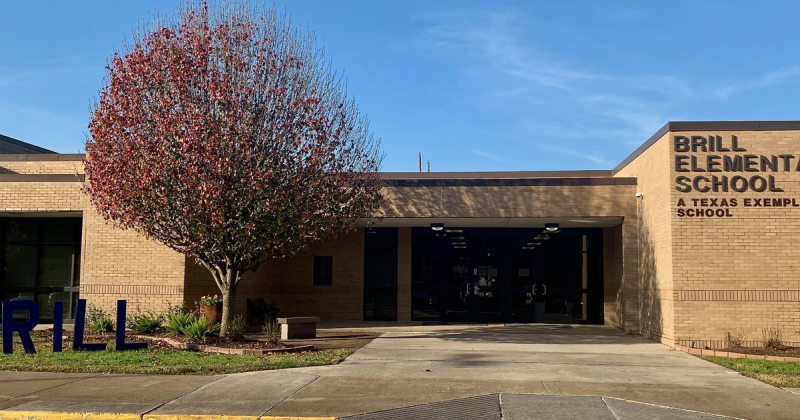
Brill Elementary School serves students in pre-kindergarten through fifth grade within the Klein Independent School District. The school maintains a student-teacher ratio of approximately 14 to 1, supporting effective classroom instruction.
Located in Klein, Texas, Brill Elementary enrolls over 900 students across its grade levels. The school offers specialized programs including Gifted and Talented education and Project Lead The Way curriculum.
Academic performance shows 60% of students achieving proficiency in reading assessments. Mathematics proficiency stands at 40% of students meeting state standards.
The school ranks among Texas elementary institutions based on state-required testing and college preparation metrics. Brill Elementary operates as one of 33 elementary schools in the Klein ISD system.
Students benefit from access to enhanced learning opportunities through the district’s comprehensive educational programs. The school focuses on empowering students to achieve academic success.
7. Willow Creek Elementary School, Saginaw
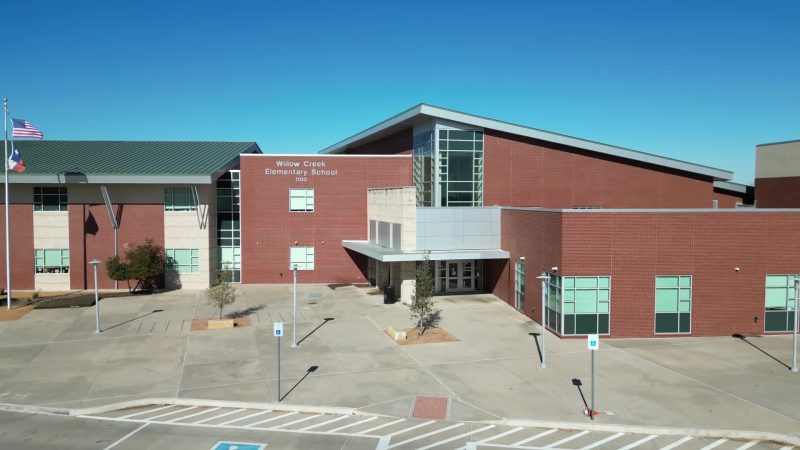
Willow Creek Elementary School ranks within the top 50% of all public schools in Texas. The school serves 621 students in grades prekindergarten through fifth grade.
Located in the Saginaw area, this elementary school demonstrates solid academic performance compared to state standards. The school maintains consistent enrollment numbers across its grade levels.
Willow Creek Elementary participates in the broader Saginaw school system. The school offers standard elementary curriculum aligned with Texas education requirements.
Families in the Saginaw area consider this school among viable options for elementary education. The school’s ranking reflects its commitment to meeting state educational benchmarks and serving its student population effectively.
8. Barton Elementary School, Irving
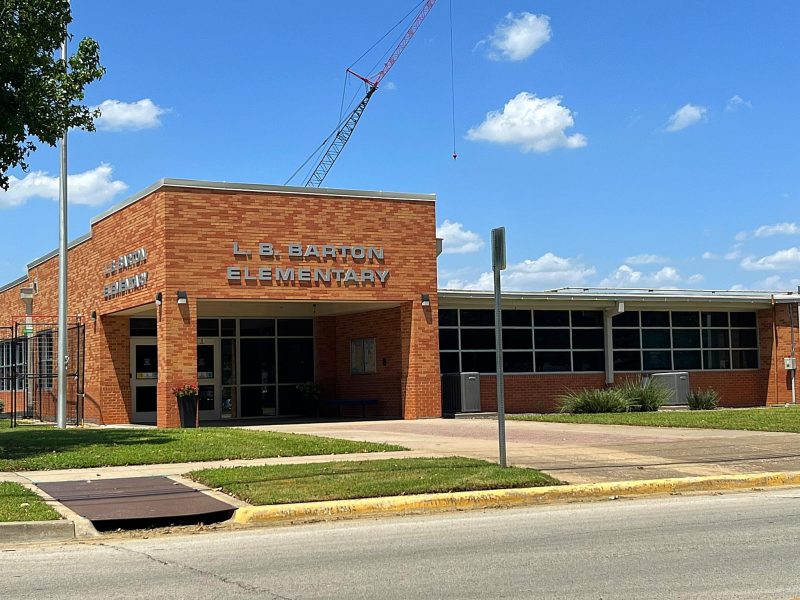
Barton Elementary School serves students in the Irving Independent School District. The school provides education for grades pre-kindergarten through fifth grade.
The campus focuses on creating a supportive learning environment for its diverse student population. Teachers work to develop both academic skills and character development in their students.
Barton Elementary emphasizes reading literacy and mathematics proficiency as core educational foundations. The school implements various instructional programs designed to meet individual student needs.
The facility offers extracurricular activities and after-school programs to enhance the educational experience. Parents and community members actively participate in school events and volunteer opportunities.
The school maintains partnerships with local organizations to provide additional resources for students and families. These collaborations help support student achievement and community engagement throughout the academic year.
9. Colonial Hills Elementary School, San Antonio

Colonial Hills Elementary School serves students in San Antonio’s diverse educational landscape. The school operates within the San Antonio Independent School District.
The campus provides instruction for prekindergarten through fifth grade students. Teachers focus on core academic subjects including mathematics, reading, science, and social studies.
Colonial Hills maintains standard class sizes typical of San Antonio elementary schools. The facility includes classrooms, a library, and common areas for student activities.
The school participates in Texas state assessments and follows curriculum standards set by the Texas Education Agency. Student performance data contributes to the school’s annual accountability ratings.
Colonial Hills Elementary serves families in the surrounding San Antonio neighborhoods. Parents can access information about enrollment, school policies, and academic programs through the district website.
The school offers various programs designed to support student learning and development. Staff members work to create an environment focused on academic achievement.
10. Clear Lake Elementary School, Houston

Clear Lake City Elementary School serves 583 students in grades 1-12 within the Clear Creek Independent School District. The school maintains a student-to-teacher ratio of 18.1 to 1.
The school offers a Gifted & Talented program for academically advanced students. Two sports programs provide athletic opportunities for students.
Clear Lake area elementary schools show math proficiency scores averaging 39% compared to the Texas state average of 45%. Reading proficiency rates reach 46% versus the statewide average of 52%.
The school’s mission focuses on building a safe community where students take ownership of their learning. They emphasize developing confidence and exploring individual talents through supportive relationships.
Clear Lake City Elementary ranks as one of 27 elementary schools in its district. The school combines traditional educational approaches with programs designed to meet diverse student needs.
11. Coker Elementary School, San Antonio
Coker Elementary School serves students in the San Antonio Independent School District. The school provides educational programs for elementary-age children in the San Antonio area.
The campus offers standard elementary curriculum aligned with Texas state standards. Teachers work to support student academic growth across core subject areas.
Coker Elementary maintains facilities designed for young learners. The school environment focuses on creating a foundation for continued educational development.
Parents can contact the school directly for enrollment information and specific program details. The administration provides guidance on registration processes and academic expectations.
The school participates in district-wide assessments and follows DISD policies. Students receive instruction in reading, mathematics, science, and social studies as part of the regular curriculum.
12. Highland Heights Elementary School, Houston
Heights Elementary School serves students in one of Houston’s most vibrant neighborhoods. The school operates within the Houston Independent School District system.
Located in the Greater Heights area, the school provides educational services to families in this historic Houston community. The Heights neighborhood has experienced significant growth and development in recent years.
The school follows HISD’s curriculum standards and guidelines. Students receive instruction in core academic subjects including reading, mathematics, science, and social studies.
Heights Elementary maintains typical elementary school grade levels from prekindergarten through fifth grade. The school serves the local community’s educational needs within the broader Houston public school system.
The campus provides standard elementary school facilities and resources. Teachers work to deliver age-appropriate instruction aligned with state educational requirements and district objectives.
13. De Zavala Elementary School, San Antonio
De Zavala Elementary School serves 418 students in prekindergarten through fifth grade. The school operates within the San Antonio Independent School District.
The student-teacher ratio stands at 13 to 1, providing a smaller class environment. According to state assessments, 17% of students achieve proficiency in math and 32% in reading.
The school offers a Gifted and Talented program for qualifying students. It ranks among 66 elementary schools in the San Antonio Independent School District.
De Zavala Elementary receives state funding as a public institution. The school serves families in the San Antonio area with diverse educational backgrounds and needs.
Current enrollment figures place it as a mid-sized elementary school within the district. The school maintains standard prekindergarten through fifth-grade curriculum offerings.
14. William B Travis Vanguard
William B. Travis Vanguard is a public magnet middle school (grades 4-8) in the Dallas Independent School District, with about 500-510 students. The school is designed for students identified as academically talented and offers an advanced, rigorous curriculum.
The student body is fairly diverse: about 51% White, 26% Hispanic, 8% Asian, 6% African American, around 8% multiracial, and about 2% American Indian.
Only about 16.6% of students are economically disadvantaged, which is much lower than the district overall.
Nearly 100% of students are in the Gifted & Talented program, and the school has very low rates of special education students.
It also offers bilingual/ESL services for around one-fifth of students. Academic performance is very strong: close to 99% proficiency in reading and extremely high scores in math. The school is highly regarded in state rankings and is often among the top middle schools in Texas.
15. Harlean Bean Elementary School, Fort Worth
Harlean Elementary School serves students in the Fort Worth Independent School District. The school provides educational programs for pre-K through fifth grade students.
Located in Fort Worth, Texas, the school operates within one of the state’s larger urban school districts. Fort Worth ISD encompasses numerous elementary schools throughout the metropolitan area.
The school follows Texas state curriculum standards and assessment requirements. Students participate in standardized testing programs mandated by the state education system.
Harlean Bean Elementary offers various academic programs designed to meet diverse student needs. The school provides special education services and English language learner support when applicable.
Faculty members hold appropriate teaching certifications required by the state of Texas. The school maintains standard classroom sizes typical of public elementary institutions in the district.
Families in the Harlean Bean Elementary attendance zone have access to district transportation services. The school participates in federal meal programs for eligible students.
16. Oakmont Elementary School, Fort Worth
Oakmont Elementary School serves students in the Fort Worth area with a focus on supportive learning environments. The school emphasizes giving students adequate time and space to process information and respond to questions.
Teachers at Oakmont prioritize individualized attention and assistance. When students provide incorrect answers, educators work with them to guide understanding rather than simply moving forward.
The school’s approach includes checking on student wellbeing. Staff members actively ask students when something appears to be wrong, creating an environment where concerns can be addressed promptly.
Student feedback indicates appreciation for the patient teaching methods employed at Oakmont. The slower-paced approach allows learners to feel more comfortable participating in classroom discussions.
Oakmont Elementary maintains its commitment to creating a nurturing academic environment. The school’s teaching philosophy centers on ensuring each student receives the support needed to succeed academically.
17. Brinker Creek Elementary School, Plano
Brinker Creek Elementary School serves students in the Plano Independent School District. The school operates within one of Texas’s well-regarded educational systems.
Plano ISD ranks 230 out of 961 districts statewide. The district receives a 4 out of 5 star rating from SchoolDigger.
Brinker Creek Elementary provides education for pre-kindergarten through fifth grade students. The school follows the district’s curriculum standards and educational programs.
The campus offers various academic and extracurricular activities for its student population. Teachers work to support student achievement across core subject areas.
Families in the Brinker Creek attendance zone have access to the school’s programs and resources. The school maintains facilities designed to support elementary-age learners.
Brinker Creek Elementary operates as part of Plano’s network of 46 elementary schools. The district provides oversight and support for the school’s educational mission.
18. Early Childhood School, Frisco
Early Childhood School operates within the Frisco Independent School District, one of Texas’s most acclaimed educational systems. The school serves students from pre-kindergarten through fifth grade.
Frisco ISD maintains 36 elementary schools across the district. Early Childhood benefits from the district’s strong academic standards and comprehensive educational programs.
The school follows Texas Essential Knowledge and Skills curriculum requirements. Students receive instruction in core subjects including mathematics, reading, science, and social studies.
Early Childhood provides various extracurricular activities and enrichment programs. These opportunities support student development beyond traditional classroom learning.
The facility features modern classrooms and educational technology resources. Teachers utilize current instructional methods to engage students in learning.
Frisco’s elementary schools consistently rank among Texas’s top-performing institutions. Early Childhood participates in state-mandated testing and assessment programs to measure student progress.
The school maintains partnerships with families to support student success. Regular communication keeps parents informed about academic programs and school events.
19. Lakeway Elementary School, Lakeway
Lakeway Elementary School serves students in Austin, Texas, within the Lake Travis Independent School District. The school enrolled 587 students during the 2023-2024 academic year.
The school ranks #982 among Texas elementary schools based on state-required test performance and graduation metrics. GreatSchools rates Lakeway Elementary with an 8/10 rating, indicating above-average performance compared to other public and charter schools in Texas with similar grade levels.
Lakeway Elementary maintains a focus on providing a safe and orderly learning environment for its students. The school emphasizes creativity and technical skills development through its Art and Music programs.
Located in the 78734 zip code area, Lakeway Elementary stands as one of the top-ranked public elementary schools in its region. The school continues to demonstrate solid academic performance within the competitive Lake Travis school district.
20. Sycamore Elementary School, Fort Worth
Sycamore Elementary School serves students in the Fort Worth area with a focus on academic excellence and student development. The school maintains strong educational standards while fostering a supportive learning environment.
The campus provides comprehensive elementary education programs designed to meet diverse student needs. Teachers work to create engaging classroom experiences that promote both academic growth and personal development.
Sycamore Elementary emphasizes building foundational skills in core subjects including reading, mathematics, science, and social studies. The school’s curriculum aligns with state standards while incorporating innovative teaching methods.
The school community includes dedicated educators, involved parents, and motivated students working together toward shared educational goals. This collaborative approach helps create a positive atmosphere for learning and growth.
Sycamore Elementary continues to serve as an important educational institution within the Fort Worth school system.
21. Westwood Elementary School, Houston
Westwood Elementary School serves 430 students in kindergarten through fifth grade in Houston’s Spring Branch Independent School District. The school maintains a student-teacher ratio of 13.6 to 1.
The school currently ranks in the bottom 50% of Texas public elementary schools. It holds the #3323 position among Texas elementary schools based on state test performance and student preparation metrics.
Westwood Elementary offers a Gifted & Talented program for qualifying students. The school operates as one of 28 elementary schools within the Spring Branch Independent School District.
The district shows varied academic performance across its schools. While nearby institutions like Rummel Creek Elementary and Wilchester Elementary rank in the top 5% statewide, Westwood Elementary faces challenges meeting state performance averages.
22. Rolling Hills Elementary School, Fort Worth
Rolling Hills Elementary serves grades Pre-K through 5, with approximately 426–430 students enrolled. The school is part of the Fort Worth Independent School District. The teacher experience is solid, at around 10-11 years on average.
Demographically, the school is majority White (~52%), with about 35% Hispanic, small percentages of African American, Asian, and students of two or more races.
Roughly 29% of students are economically disadvantaged, and about 8% are in bilingual/English learner programs. Around 12-13% are in special education, and the proportion of students in gifted programs is about 11-12%.
On academic performance and state accountability, the school recently earned an “A” rating overall. Students tend to outperform many peers in district- and state-level tests, especially in reading and math.
Rolling Hills is seen as performing above average for schools serving similar grade levels in its area.
23. Timber Creek Elementary School, Flower Mound
Timber Creek Elementary School serves 440 students in prekindergarten through fifth grade in Flower Mound, Texas. The school operates within the Lewisville Independent School District.
The school ranks in the top 20% of all public elementary schools in Texas. It maintains a student-to-teacher ratio of 11.8 to 1, providing focused attention for learners.
Timber Creek Elementary offers a Gifted and Talented program for advanced students. The school consistently performs in the top 35% of Texas elementary schools academically.
Located at 1900 Timber Creek Road, the school serves a large suburban community. The facility emphasizes developing leadership skills among its student body.
The school receives a rating of 86 out of 100 on standardized assessment comparisons. Timber Creek Elementary maintains its position as one of 42 elementary schools in the district.
24. Meadowbrook Elementary School, Dallas
Meadowbrook School serves students from kindergarten through 8th grade in Dallas. The private institution maintains a small student body of 13 enrolled students.
The school operates with an exceptionally low student-to-teacher ratio of 5.0 students per educator. This allows for individualized attention and personalized instruction.
Meadowbrook has operated for over 40 years in the Dallas area. The school focuses on preparing young minds while helping children develop enthusiasm for learning.
The institution admits students regardless of race, color, or ethnic background. All students receive equal access to school programs and activities.
Meadowbrook emphasizes encouraging individuality among its students. The school also works to promote self-confidence in each child’s academic development.
The school serves children as young as 3.5 years old through kindergarten age. Meadowbrook operates as a non-denominational educational institution.
25. Parkway Elementary School, Fort Worth
Parkway Elementary School serves students in Fort Worth Independent School District. The school operates within one of Texas’s well-regarded school systems.
Fort Worth ISD elementary schools maintain an average ranking of 8 out of 10. This places them in the top 30 percent of Texas public elementary schools.
The district serves a diverse student population with 69 percent minority enrollment. This diversity reflects the broader Richardson community demographics.
Parkway Elementary benefits from being part of a district that has shown improvement in recent rankings. Fort Worth ISD moved up 21 positions in statewide rankings and now performs better than 60.2 percent of Texas districts.
The school provides educational services within a city that houses 20 elementary schools total. These schools operate under both Fort Worth ISD and Dallas ISD governance.
Students at Parkway Elementary receive instruction in a district committed to academic excellence and maintaining safe learning environments.
26. Ridgeview Elementary School, Keller
Ridgeview Elementary School serves students in the Keller Independent School District. The school operates within one of Texas’s well-regarded educational systems.
Keller ISD ranks better than 76.1% of districts statewide. The district dropped 45 positions in recent rankings but maintains strong performance metrics.
The school follows district-wide standards for curriculum and instruction. Students have access to resources typical of Keller ISD schools.
Ridgeview Elementary participates in state testing requirements. The school maintains student-teacher ratios consistent with district guidelines.
Parents in the Ridgeview Park area have access to multiple elementary school options. The location provides convenient access for families in this Keller neighborhood.
The school benefits from Keller’s reputation for academic excellence. District-wide initiatives support student achievement across all elementary campuses.
27. Elm Grove Elementary School, Buda
Elm Ridge Elementary School serves students in the Buda area as part of the local school district system. The school provides education for elementary-aged children in prekindergarten through fifth grade.
Located in Buda, Texas, Elm Ridge Elementary operates within a city known for its strong educational performance. Buda elementary schools average an 8/10 ranking, placing them in the top 30% of Texas public elementary schools.
The school serves a diverse student population typical of Buda-area schools. Austin elementary schools maintain a minority enrollment of approximately 71%, with Hispanic students comprising the majority demographic.
Elm Ridge Elementary focuses on providing core academic instruction across all grade levels. The school follows Texas state curriculum standards and participates in required state assessments.
28. Valley Creek Elementary School, McKinney
Valley Creek Elementary School serves students in McKinney, Texas. The school operates within the McKinney Independent School District.
The school has received recognition in 2025 rankings among Texas elementary schools. Valley Creek Elementary maintains academic programs designed to support student learning and development.
McKinney elementary schools face challenges with academic proficiency rates. The district’s elementary schools average lower scores than state benchmarks in both math and reading.
Valley Creek Elementary provides educational services to families in the McKinney area. The school follows Texas state curriculum standards and requirements.
Students at Valley Creek Elementary have access to various educational resources and programs. The school staff works to create a learning environment that supports academic growth.
The school participates in state testing and assessment programs. These evaluations help measure student progress and school performance compared to other Texas elementary schools.
29. Sunset Valley Elementary School, Austin
Sunset Valley Elementary School serves students in prekindergarten through fifth grade in Austin’s southwest area. The school is located at 3000 Jones Road and operates within the Austin Independent School District.
The campus enrolls approximately 447 students with a student-to-teacher ratio of 14.9 to 1. This ratio allows for more individualized attention in classroom settings.
Sunset Valley Elementary ranks in the top 50% of Texas schools for overall test scores. Both math and reading proficiency fall within the state’s top 50% performance range.
The school’s student achievement rate stands at 30-34%, which falls below the Texas state average of 37%. Principal Elaine Navarro leads the campus with a focus on creating an inclusive educational environment.
Sunset Valley Elementary emphasizes nurturing each student’s potential through its academic programs. The school serves families in the Travis County area near the intersection of major Austin thoroughfares.
30. Maplewood Elementary School, Austin
Maplewood Elementary School serves students in the Austin Independent School District. The school focuses on providing quality education through dedicated teaching staff and structured academic programs.
The campus offers standard elementary curricula covering core subjects including mathematics, reading, science, and social studies. Students participate in various classroom activities designed to build foundational skills.
Maplewood Elementary maintains facilities that support student learning and development. The school provides resources for both academic instruction and extracurricular activities.
The administration works to create a supportive learning environment for all students. Teachers collaborate to implement educational strategies that address different learning styles and academic needs.
Parents can engage with the school community through various programs and volunteer opportunities. The school encourages family involvement in student education and school activities.
How Texas Evaluates Elementary School Performance
Texas uses a comprehensive system that combines academic accountability ratings, demographic analysis, and standardized test results to measure elementary school effectiveness. The state produces annual reports that track performance across multiple student groups and educational metrics.
Academic Accountability Ratings
The Texas Education Agency assigns accountability ratings to every public elementary school through the Accountability Rating System for Texas Public Schools and Districts. These ratings evaluate schools based on student achievement, school progress, and closing performance gaps between different student populations.
Schools receive ratings that reflect their overall performance compared to state standards. The system examines how well students perform academically and whether schools are making adequate progress year over year.
Key Rating Components:
- Student achievement levels
- Academic growth measurements
- Performance gap closure between student groups
- College and career readiness indicators
The accountability system ensures schools maintain consistent educational standards. Districts use these ratings to identify schools needing additional support or resources.
Student and Teacher Demographics
Texas Academic Performance Reports analyze school performance by breaking down data across various student demographics. The reports examine achievement gaps between different ethnic groups, socioeconomic backgrounds, and other student characteristics.
Schools must demonstrate that all student populations are receiving quality education. The demographic analysis helps identify whether certain groups are underperforming compared to their peers.
Demographic Categories Tracked:
- Ethnicity and race
- Economic disadvantage status
- English language learner status
- Special education needs
- Gifted and talented participation
Teacher quality metrics also factor into school evaluations. The state tracks teacher experience levels, certification status, and retention rates at each campus.
Role of Standardized Testing in Texas
State standardized tests provide the primary data source for measuring elementary school academic performance. Texas administers assessments in reading, mathematics, writing, and science at specific grade levels.
Test scores form the foundation of school accountability ratings. Schools must meet minimum performance thresholds across all tested subjects and student groups.
Testing Schedule:
- Grades 3-5: Reading and mathematics annually
- Grade 4: Writing assessment
- Grade 5: Science assessment
The Texas Education Agency uses test results to compare schools statewide and within districts. Performance data gets disaggregated by student demographics to ensure equitable educational outcomes.
Schools showing consistent improvement in test scores receive recognition. Those with declining performance may face state intervention or additional oversight requirements.
Key Factors for Evaluating Elementary Schools
Academic performance through standardized test scores like STAAR provides measurable data on student achievement. Strong parent-teacher partnerships and comprehensive safety protocols create environments where children can focus on learning and development.
Curriculum and Enrichment Programs
Academic performance forms the foundation of school evaluation. STAAR test scores reveal how well students master grade-level reading, math, and science concepts compared to state standards.
Schools with comprehensive curricula offer balanced instruction across core subjects. Advanced programs include gifted and talented services, dual-language immersion, and STEM-focused learning tracks.
Enrichment opportunities extend beyond basic academics.
Quality elementary schools provide:
- Art and music programs with dedicated specialists
- Physical education with structured fitness activities
- Library services with certified librarians
- Technology integration using tablets or computers
Teacher qualifications directly impact instruction quality. Schools with master’s-degree holders and experienced educators typically show stronger student outcomes.
Class sizes affect individual attention students receive. Texas averages 18-22 students per elementary classroom, with smaller ratios generally supporting better learning.
Parental Involvement and Community Support
Parent-teacher communication strengthens student success through regular progress updates. Schools use online portals, newsletters, and scheduled conferences to keep families informed about academic progress and classroom activities.
Volunteer opportunities connect families to school communities. Successful programs include classroom assistance, field trip supervision, fundraising events, and reading programs that utilize parent expertise.
Community partnerships expand learning resources beyond school walls. Local businesses, libraries, and cultural organizations provide real-world learning experiences through field trips and guest speakers.
School leadership accessibility ensures parent concerns receive attention. Principals who maintain open-door policies and respond promptly to questions create positive school climates.
Family engagement programs support learning at home. Schools offer workshops on reading strategies, homework assistance techniques, and technology use to help parents reinforce classroom instruction.
Safety and Well-Being
Physical security measures protect students during school hours. Controlled building access, visitor check-in systems, and emergency response protocols create secure learning environments.
Behavioral support systems address student conduct through clear expectations and positive reinforcement. Schools implement anti-bullying policies with specific reporting procedures and intervention strategies.
Mental health resources support emotional development. Counselors provide individual support, social skills groups, and crisis intervention when students face personal challenges.
Health services maintain student wellness through:
- Licensed nurses for medical needs
- Medication management protocols
- Emergency medical response plans
- Health screenings and immunization tracking
Playground and facility safety prevents injuries during recess and activities. Regular equipment inspections and age-appropriate play structures reduce accident risks while promoting physical activity.





